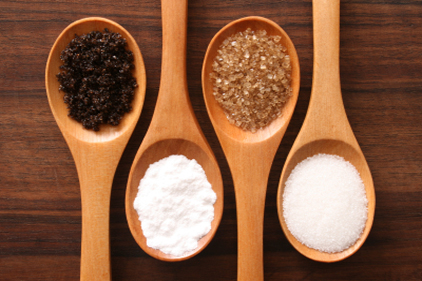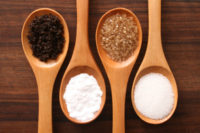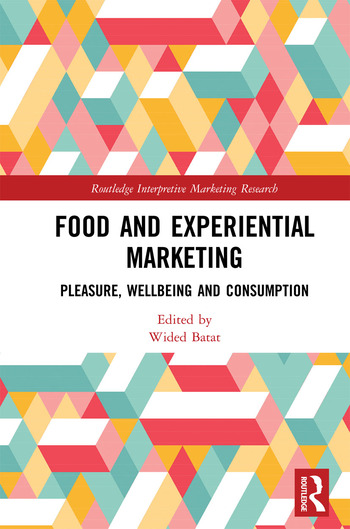Sugar Consumption Revised

“There’s such an implication of precision and accuracy in that decimal point -- boy, we’ve got this nailed now,” said Michael F. Jacobson, executive director of the Center for Science in the Public Interest. “But when you take a good look, it’s built on a foundation of sand.”
Jean C. Buzby, the agricultural economist who headed the department’s team responsible for the data that led to the revision in sugar consumption, agreed that it was far from perfect but said it was better than what was used in the past.
She pointed to the note on each page of the government’s data that labeled them “first estimates” that “are intended to serve as a starting point for additional research and discussion.”
Few people are aware of the change, which quietly occurred two months ago. Jacobson stumbled across it recently while working on a project on sugar consumption. He takes issue with the new methodology and contends it could be a setback in the push for healthy eating. Suggestions that sugar consumption is down, or dropping, could take some pressure off companies that make sugary foods, for example.
In e-mails the center obtained through a Freedom of Information request, officials at sugar industry trade groups discussed the benefits of the lower estimate and how they might persuade the USDA to make a change that would reduce it even more.
“We perceive it to be in our interest to see as low a per-capita sweetener consumption estimate as possible,” Jack Roney, director of economics and policy analysis at the American Sugar Alliance, wrote in an email on March 30, 2011.
Roney said in a telephone interview that he was pleased to have “more accurate” information about sugar consumption available. “The extent to which caloric sweeteners are in the public’s eye as a possible source or cause of increasing obesity in this country is huge,” he said. “If folks are assuming there is much greater consumption than there really is, then we are misleading the public unnecessarily.”
Estimating sugar consumption is a tricky proposition, fraught with potential for misjudgments. It is based loosely on an educated guess at how much of various sweetener-laden foods that consumers buy is actually eaten, versus how much is thrown away. “It is difficult to obtain nationally representative estimates of consumer-level food loss,” Buzby wrote in an email.
There had long been a sense that the estimates the department was using failed to capture all of the loss that was occurring, Buzby said. Five years ago, just as debate over sugar use was heating up, the USDA began an overhaul of what it called “consumer-level food-loss estimates.” It hired RTI International, a nonprofit consulting firm, to help it come up with new loss estimates more firmly anchored in data.
Mary K. Muth, director of food and nutrition policy research at RTI, said she had used data from the Nielsen Company’s Homescan surveys of consumer food purchases and interviews done for the Centers for Disease Control’s National Health and Nutrition Examination Survey to come up with the new loss estimates for sugar and sweeteners.
“It’s an improvement over how it was done before but an incremental one, and surely more work can be done,” Muth said.
In all, RTI’s revisions called for higher loss estimates for 84 foods and lower losses of 54, while leaving a handful unchanged.
In some cases, the change in loss estimates was drastic. RTI estimated, for example that 69% of fresh pumpkins are lost at the consumer level compared with the old estimate of 20%.
A report on the changes written by Muth, Buzby and others concluded more pumpkins were being used for decorations and subsequently discarded.
Conversely, RTI estimated that 15% of meat and poultry is lost today because so many of those products are sold boneless, trimmed lean and stored in conditions that preserve them longer. The previous estimate was 40%.
The firm’s new estimated loss for cane and beet sugar is 34%, compared with the old estimate of 20% -- although Muth and Buzby said it was improper to make such comparisons because of changes in methodology.
The new estimate includes the amount of sugar consumers reported in the CDC’s survey that they had eaten, by, say, stirring it into coffee or sprinkling it on oatmeal and experts’ estimates of how much sugar was used in food products -- and subsequently discarded.
“The new estimate is still relying heavily on experts making what seem to me to be largely guesses,” Jacobson said. “Other than the 4% they’re getting” from the National Health and Nutrition Examination Survey, “what do they really know for certain?”
The experts themselves have trouble remembering what they suggested. Park Wilde, associate professor at the Friedman School of Nutrition Science and Policy at Tufts University, served on the RTI panel, which met in 2008. He said by e-mail that he recalled little of what happened; too much time had passed. “I can’t recall ever estimating or offering an expert opinion on loss rates for sweetener categories,” Wilde wrote.
Similarly, Helen H. Jensen, a professor of economics at Iowa State University, said her memory of the panel’s discussions was dim. She said she did not recall whether the panel had addressed estimates of sugar and sweetener use.
“I don’t remember that we (as the external group) addressed the sugar/sweetener estimates separately on that project,” she wrote in an e-mail. “It is a difficult sector to track. There are a lot of sweeteners that go into baked goods and pastries,” for example, that are thrown out as stale, discarded from food service, etc.).”
Muth and Buzby said they had hoped more people would offer suggestions on the report, which was open for comment from January to April 2011. “We were relying on archaeological methods, which are pretty challenging,” Muth said. “I wish there had been more feedback because that perhaps would have given us some ideas about how to make improvements.”
Although the report was viewed more than a thousand times, only two comments came in, Buzby said. One pointed out a misplaced decimal point -- “We corrected this,” Buzby wrote -- and the other comment was from “some people in the sugar industry.”
The industry wanted to see the loss estimates increased for high fructose corn syrup, glucose and dextrose, which are sweeteners used in processed foods. “If they surrender to our reasoning,” Roney wrote, it was possible high fructose corn syrup consumption estimates “could dip and the total sweeteners estimate would drop even further.”
The sugar industry argued that the loss estimates for high fructose corn syrup, glucose and dextrose should match those of sugar since they are used in much the same way as an ingredient. The U.S.D.A. agreed with that, the industry’s reasoning, Buzby wrote.
The effect was to increase the amount of sweeteners lost, further reducing the amount eaten, from 88 pounds to 76.7 pounds, according to Roney’s e-mail.
“I don’t disagree that high fructose corn syrup and the rest shouldn’t be looked at the same way as conventional sugar,” Jacobson said. “My objection is more fundamental -- that they are just picking numbers, 20%, 17%, 34%, and giving them an authority that they don’t really have.”
Looking for a reprint of this article?
From high-res PDFs to custom plaques, order your copy today!





